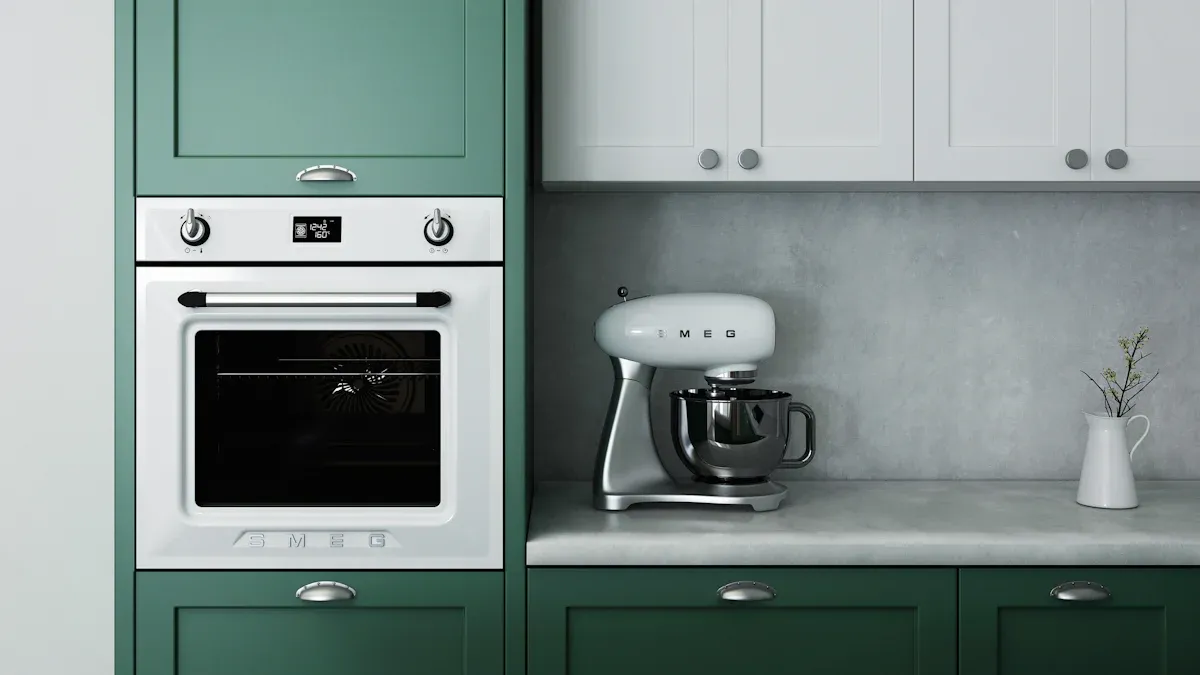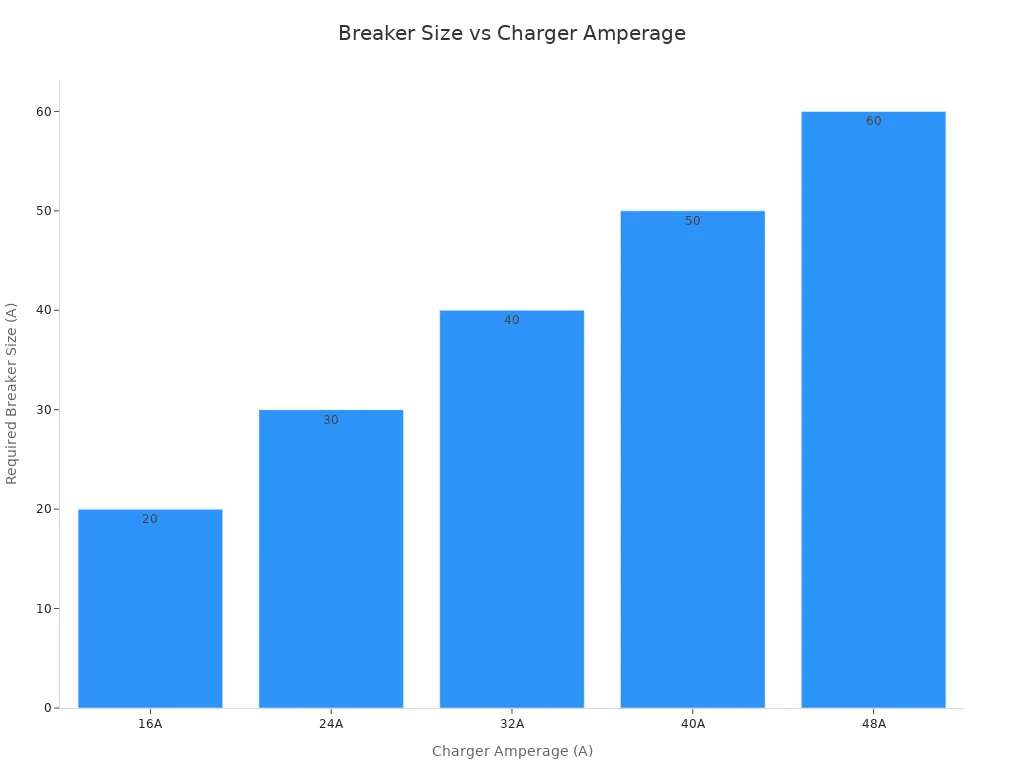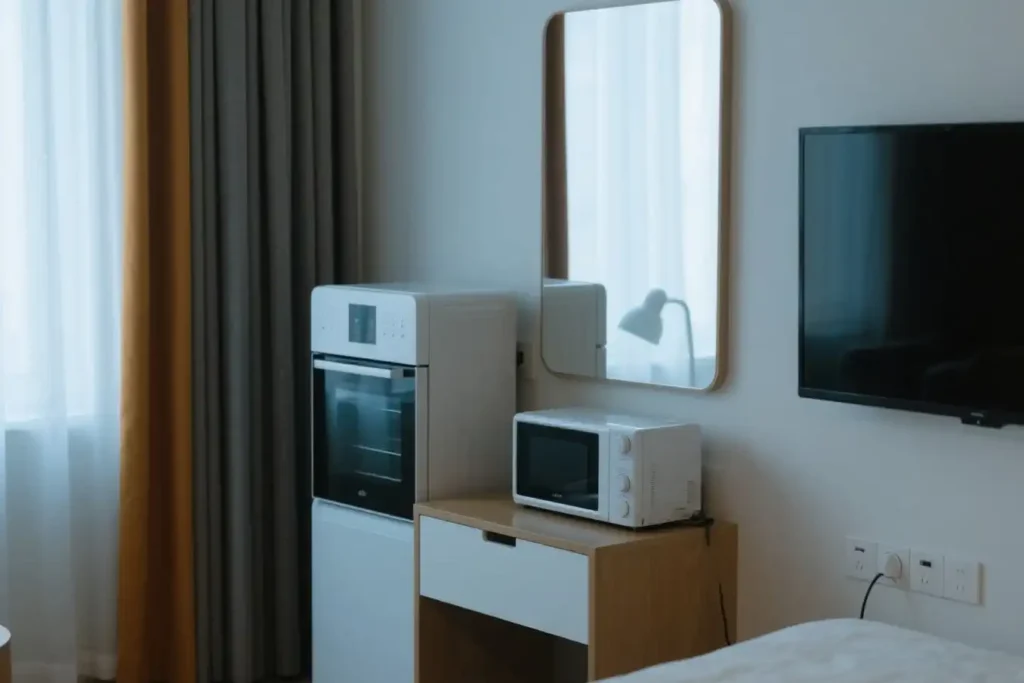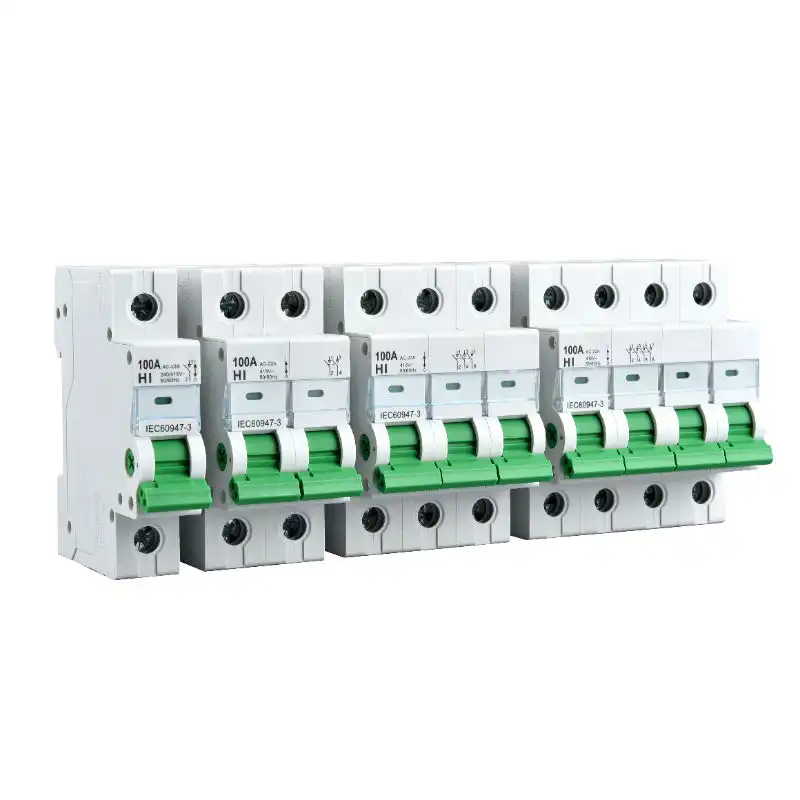You often see a 40 ampere circuit breaker paired with heavy-duty appliances. These include electric ranges, electric dryers, large water heaters, central air conditioners, Level 2 EV chargers, hot tubs or spas, dual fuel ranges, and certain 220V power tools. Each of these requires its own circuit equipped with a 40 ampere circuit breaker to safely handle high power demands. Understanding which appliances need a 40 ampere circuit breaker helps you prevent electrical hazards and comply with safety regulations.
Key Takeaways
- Many big appliances like electric ranges, large water heaters, and central air conditioners need a 40 amp breaker. This helps them use lots of power safely.
- Always use the correct wire size with a 40 amp breaker. Usually, this is 8 AWG copper wire. This stops wires from getting too hot and causing fires.
- Each large appliance should have its own 40 amp circuit. This keeps your home safe and stops circuits from getting too full.
- Do not use a 40 amp breaker for small appliances, lights, or normal outlets. This can cause serious electrical problems.
- You should hire a licensed electrician to put in or upgrade 40 amp breakers. This makes sure everything is safe, follows the rules, and works right.
Why 40 Amp Breakers
Power Demands
Some appliances use a lot of electricity at once. You need a 40 ampere circuit breaker for these. Many kitchen ranges, big water heaters, and central air conditioners use between 9,000 and 12,000 watts. These appliances pull a lot of current, especially when starting or running at full power. For example, an electric range turns its heating parts on and off, but it still needs a breaker that can handle the highest load. Manufacturers often say to use a 40 ampere circuit breaker in their guides because it fits the usual current these appliances use.
- Most electric ranges use between 9.1 kW and 12.1 kW.
- Appliances with these numbers can pull more than 40 amps at 240 volts, but they do not always use full power.
- The National Electrical Code (NEC) allows a 40 ampere circuit breaker for these appliances because they turn on and off, so the average current is lower.
If you pick a breaker that is too small, it will trip a lot. If you pick one that is too big, it might not protect the wires or the appliance from getting too hot. The breaker size must match the wire size and the appliance’s needs. For example, #8 gauge wire goes with a 40 ampere circuit breaker to stop fire hazards.
Dedicated Circuits
Each high-power appliance needs its own circuit. The NEC says this is for safety. A dedicated circuit means only one appliance is on the breaker. This stops overloads and lowers the chance of fire. It also helps your appliances last longer and keeps your home safe.
- The NEC says you need dedicated circuits for electric ranges, dryers, water heaters, air conditioners, hot tubs, and EV chargers.
- Dedicated circuits keep your appliances safe from electrical problems.
- You may need a dedicated circuit if your breaker trips a lot, lights dim, or outlets feel warm.
A 40 ampere circuit breaker on a dedicated circuit gives your appliance the power it needs without sharing. This setup keeps your home safe and helps you pass inspections.
Appliances for 40 Ampere Circuit Breaker

Electric Ranges
Many electric ranges need a 40 ampere circuit breaker. Most electric stoves and dual fuel ranges use about 40 amps at 240 volts. This is around 9,600 watts. Some bigger models can use up to 16,000 watts. They still work with a 40 ampere circuit breaker if the power demand fits. Most manufacturers say to use a 40 ampere circuit breaker for these. Sometimes, you see a 50 amp outlet even if the range only uses 40 amps. This lets you get a bigger range later. If you do, you must also change the breaker and wiring. Always use #8 gauge wire with a 40 ampere circuit breaker to keep your kitchen safe.
Tip: Electric stoves need their own 240-volt supply and a double-pole breaker. The 80% rule means a 50 amp breaker is used for appliances that draw up to 40 amps. But many homes use a 40 ampere circuit breaker for regular electric ranges.
Electric Dryers
Most electric dryers do not use a 40 ampere circuit breaker. Standard dryers use a 30 amp breaker and 10 AWG wire. Only very big or commercial dryers might need a 40 ampere circuit breaker. This is not common in homes. Using a 40 amp breaker on a 30 amp dryer is not safe. It also breaks the electrical code. The breaker size must match the dryer and the wire.
| Aspect | Typical Dryer Requirement | 40 Amp Breaker Usage |
|---|---|---|
| Amperage | Usually 30 amps | Not standard for dryers; used for larger appliances |
| Voltage | 240 volts | Same voltage, but breaker size depends on wiring |
| Breaker Size | 30 amp breaker | 40 amp breaker needs 8 AWG wire |
| Wiring Gauge | 10 AWG wire | 8 AWG wire needed for 40 amp breaker |
| Receptacle Rating | 30 amp outlet | 40 amp breaker cannot be used with 30 amp receptacle |
| Safety Considerations | Breaker matches wire & outlet | 40 amp breaker on 30 amp dryer is unsafe |
Large Water Heaters
Some large electric water heaters need a 40 ampere circuit breaker. Most water heaters from 10 to 80 gallons use a 20 to 30 amp breaker. Models with 90 or 100 gallons may need a 30 or 40 amp breaker. This depends on how much power they use. The National Electrical Code says the breaker must be 125% of the heater’s load. For example, a water heater that uses about 21 amps needs a breaker rated at least 26 amps. Only the biggest home water heaters, usually over 90 gallons, need a 40 ampere circuit breaker.
| Water Heater Capacity | Typical Breaker Size |
|---|---|
| 10 to 80 gallons | 20 to 30 amps |
| 90 gallons | 30 or 40 amps |
| 100 gallons | 30 or 40 amps |
Central Air Conditioners
Central air conditioners with lots of cooling power often need a 40 ampere circuit breaker. Units rated at 4 to 5 tons (48,000 to 60,000 BTU) usually need a breaker between 35 and 60 amps. Most 5-ton models use a 40 ampere circuit breaker. These air conditioners run on 230 volts. They need their own circuit to handle the heavy load.
| AC Size (Tons) | Approximate BTU | Typical Breaker Size (Amps) |
|---|---|---|
| 4.0 | 48,000 | 35–50 |
| 5.0 | 60,000 | 40–60 |
Level 2 EV Chargers
Level 2 electric vehicle chargers often use a 40 ampere circuit breaker. These chargers run on 240 volts. They charge your car much faster than a regular outlet. The National Electrical Code says the breaker must be 25% bigger than the charger’s draw. For example, a charger that uses 32 amps needs a 40 ampere circuit breaker. This setup gives you about 9.4 kW of charging power. It can charge many electric cars from 20% to 80% in less than five hours.

Hot Tubs and Spas
Many hot tubs and spas need a 40 ampere circuit breaker. These appliances run on 220-240 volts. They always need their own circuit. You must use a GFCI breaker for safety, as the National Electrical Code says. Most hot tubs use #8 gauge wire for a 40 amp circuit. All metal parts near the spa must be bonded to stop shocks. You also need a disconnect switch you can see from the spa for safe repairs. Modern spas need a 4-wire setup (two hot wires, one neutral, one ground). Never share this circuit with other appliances or lights.
Note: Always use flexible, waterproof conduit for wiring to outdoor spas. It is safest to have a professional install it.
Dual Fuel Ranges
Dual fuel ranges have gas burners and electric ovens. These often need a 40 ampere circuit breaker, but the exact size depends on the model and voltage. Most dual fuel ranges show a nameplate load of about 24 amps. Manufacturer instructions may list a maximum breaker size of 40 or 50 amps. The National Electrical Code and manufacturer rules can be confusing. Always check the nameplate and instructions. Some electricians wonder if a 30 amp breaker is enough. But many dual fuel ranges use a 40 ampere circuit breaker for safety and future upgrades.
| Aspect | Details |
|---|---|
| Load Calculation | About 24 amps (e.g., 6840W at 240V) |
| Manufacturer Instructions | Max 50 amps for 120/240V, max 40 amps for 120/208V |
| NEC References | NEC 210.20 and Table 220.55 guide breaker sizing |
| Unique Requirement | Breaker size depends on nameplate, voltage, and NEC guidelines |
220V Power Tools
Some big 220V power tools in workshops or garages need a 40 ampere circuit breaker. These tools include large air compressors, welders, and woodworking machines. Most home tools use less power. But commercial or industrial models may need a dedicated 40 amp circuit. Always check the tool’s manual for the right breaker size. Using the correct breaker keeps your tools safe and protects your wiring from overload.
Safety Tips
Wire Size
Picking the right wire size is very important for a 40 ampere circuit breaker. The wire must be able to carry the current safely. For a 40 amp circuit, you should use at least 8 AWG copper wire or 6 AWG aluminum wire. These wires can handle the power without getting too hot. If the wire is very long, you may need a bigger wire, like 6 AWG copper, to stop voltage drop. Never use smaller wires, like 10 AWG or 12 AWG, because they cannot carry 40 amps safely and could start a fire. Some common cable types for these circuits are NM-B, UF-B, MC, and THWN. Always make sure the wire size matches the breaker and the appliance.
Tip: The right wire gauge keeps your home safe from fires and overheating.
Professional Installation
You should always get a licensed electrician to install or upgrade a 40 ampere circuit breaker. Electricians know how to check for dangers, like arc flashes or too much power on one panel. They can suggest safety items like GFCI outlets and surge protectors. Professionals make sure your system follows the newest codes and works with modern appliances. Getting help from an expert can also save energy and might make your home worth more. Many insurance companies want proof that a professional did the work. Doing electrical work yourself can hide dangers and might cancel your insurance.
- Licensed electricians keep your home safe and follow the rules.
- Professional jobs often have warranties or guarantees.
- Experts help lower the risk of shocks and fires.
Code Compliance
Following electrical codes helps keep your home safe. A common mistake is using a 40 amp breaker with wire made for only 30 amps, like 10 AWG. This can make wires too hot before the breaker shuts off. Always match the breaker size to the wire and the device. Never use a 40 amp breaker for normal outlets or lights. These circuits are made for much less power. If you use a breaker that is too big, it might not trip when it should, which can cause a fire. Inspectors will find these mistakes, and insurance companies may not pay if they see unsafe wiring.
Warning: Only use a 40 ampere circuit breaker on its own circuit for big appliances, not for regular outlets or lights.
A 40 amp breaker is used for big appliances. These include electric ranges, some dryers, large water heaters, and central air conditioners. These appliances need the correct breaker size and wire to be safe.
- Always read the appliance manual before you change anything.
- Have a licensed electrician check your wiring and breaker size.
- Follow local codes to stop overloads and lower fire risks.
Remember, using the right breaker, wire, and appliance keeps your home safe and helps your appliances last longer.
Choose ONESTOP 40 Ampere Circuit Breaker: With over 20 years of manufacturing experience, international certification assurance, and excellent quality, we help you comprehensively improve circuit safety protection.
FAQ
What happens if you use a 40 amp breaker on a smaller appliance?
You risk overheating the wires and damaging the appliance. The breaker may not trip when needed. Always match the breaker size to the appliance and wire.
What wire size do you need for a 40 amp breaker?
You need at least 8 AWG copper wire or 6 AWG aluminum wire for a 40 amp breaker. This wire size keeps your circuit safe from overheating.
What appliances should never use a 40 amp breaker?
Never use a 40 amp breaker for standard outlets, lights, or small kitchen appliances. These devices need much less power and require smaller breakers.
What signs show you need a dedicated 40 amp circuit?
You may notice frequent breaker trips, dimming lights, or warm outlets. These signs mean your appliance needs its own 40 amp circuit.
What should you check before upgrading to a 40 amp breaker?
Always check the appliance manual and local electrical codes. You should also ask a licensed electrician to inspect your wiring and panel for safety.
The following information may be of interest to you
Analysis of the cause of air conditioning circuit breaker tripping
What Appliances Require a 30 Ampere Circuit Breaker
Circuit breaker size for electric dryers
What Makes 16 Ampere Circuit Breakers Essential for Home Safety
What size of wire is needed for a 30 ampere circuit breaker





